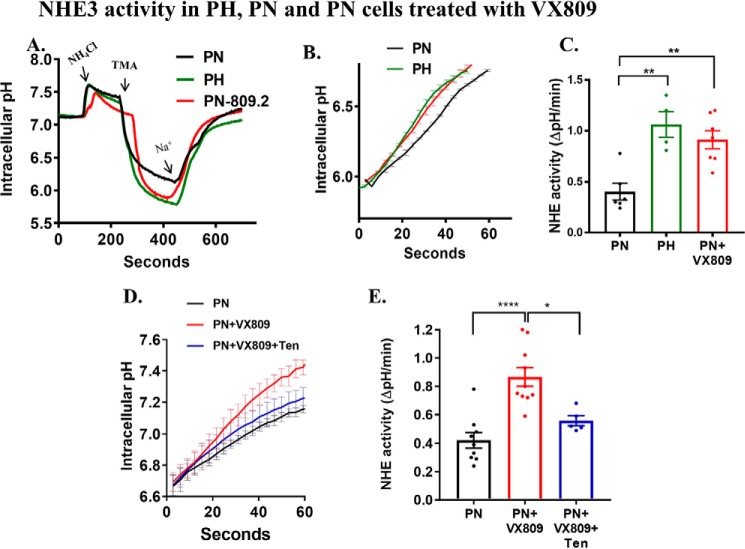Figure 5.
NHE3 activity in PN and PH cells. Na+/H+ exchange activity in PN cells was determined fluorometrically using the intracellular pH-sensitive dye BCECF-AM (10 μm). Cells were first exposed to ammonium chloride, followed by TMA to lower sodium in the extracellular solution (see “under Materials and methods” for details). At ∼400 s, sodium was abruptly added back to the apical solution. The resulting rapid increase in pH was used to assess NHE3 activity in PH and PN cells before and after treatment with VX-809 (A). The initial rate of increase in pH over the first 60 s (the initial rate of change) was used to quantify NHE3 activity as shown in B. Summary data are shown in C. Note that PH cells have higher NHE3 activity than PN cells. VX-809 increased NHE3 activity closer to normal levels. The initial rate of increase in pH was determined over the first 60 s (D) in PN cells or cells treated with VX-809 and NHE3 inhibitor (tenapanor). Summary data are shown in E. Note that VX-809 treatment increased NHE3 activity when compared with untreated PN cells. Tenapanor decreased the NHE3 activity to that observed in untreated PN cells. Initial rates of Na+-dependent intracellular alkalinization were calculated starting at pHi 5.6 over the initial 60 s of Na+ exposure (linear phase of pHi change) and expressed as ΔpH/ΔT in an individual experiment. The mean ± S.E. was determined from at least three experiments (n = 3). *, p < 0.05; **, p < 0.01; ****, p < 0.0001.

